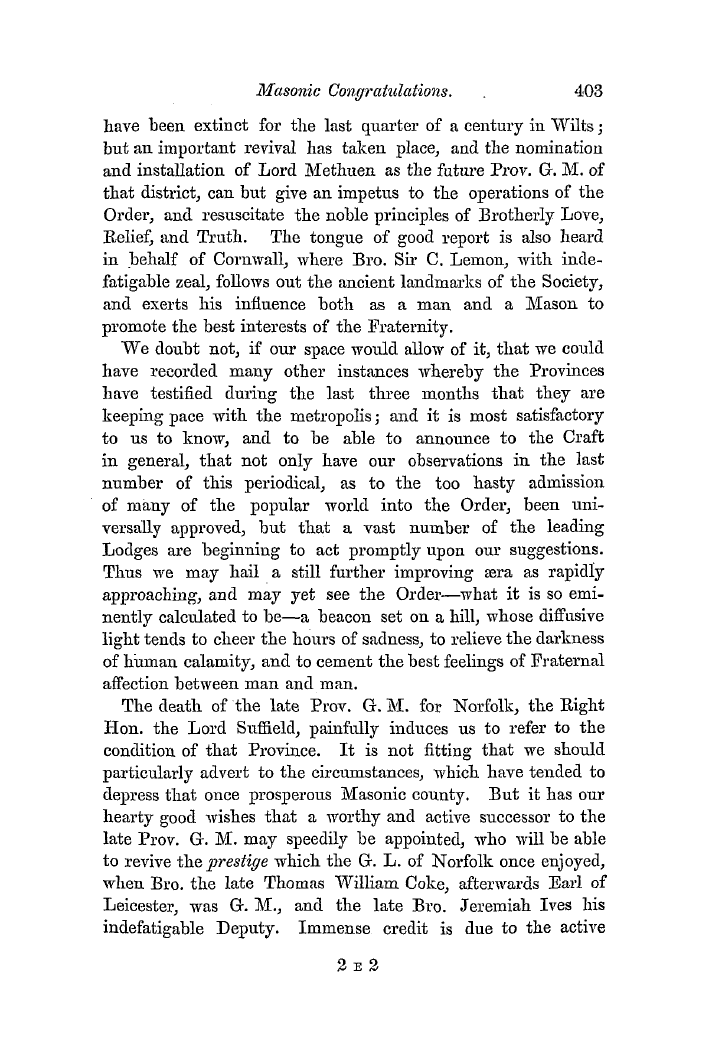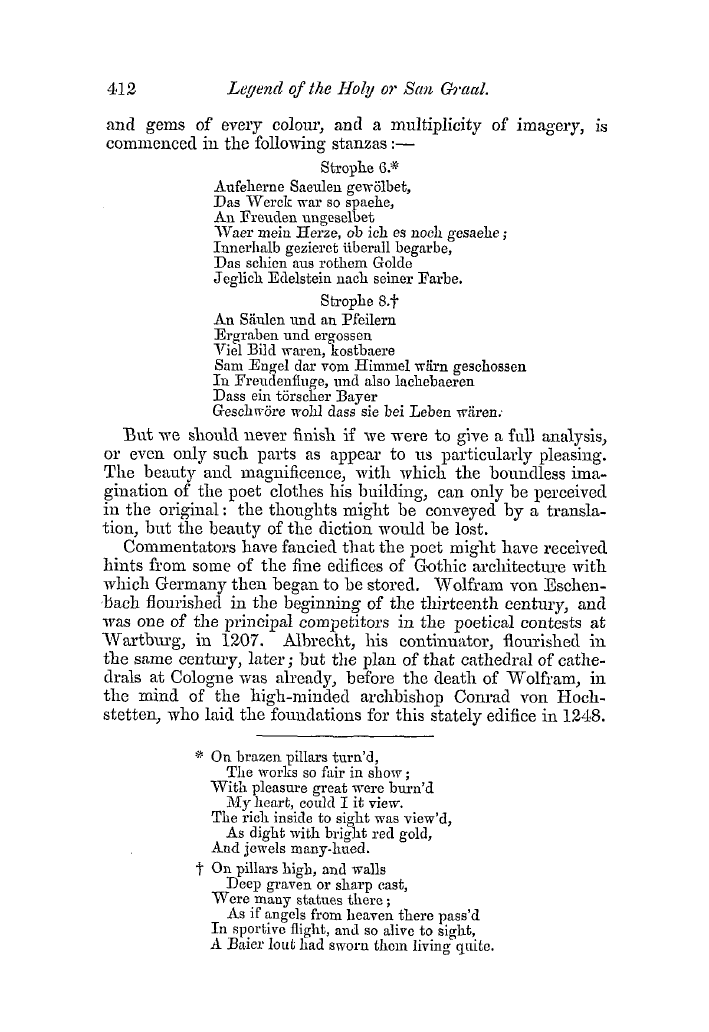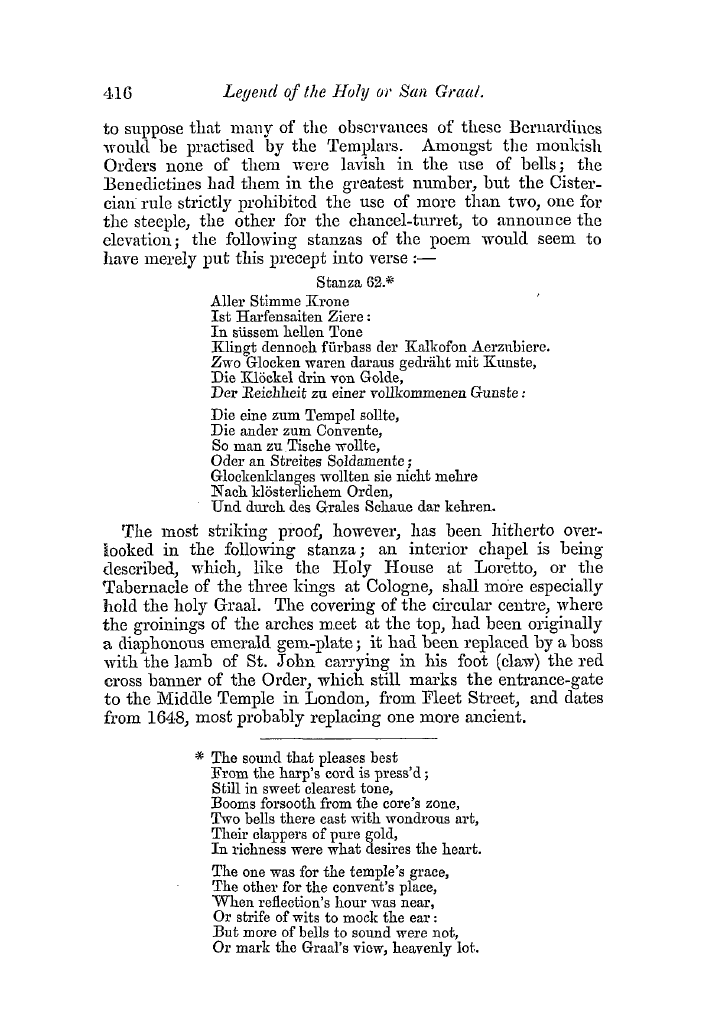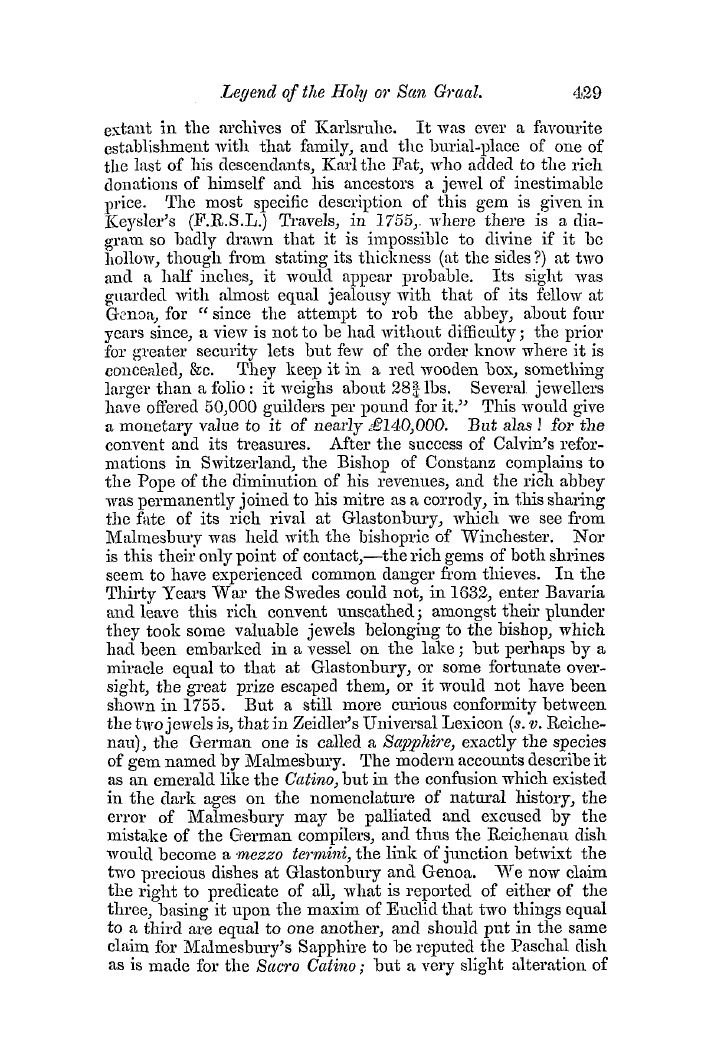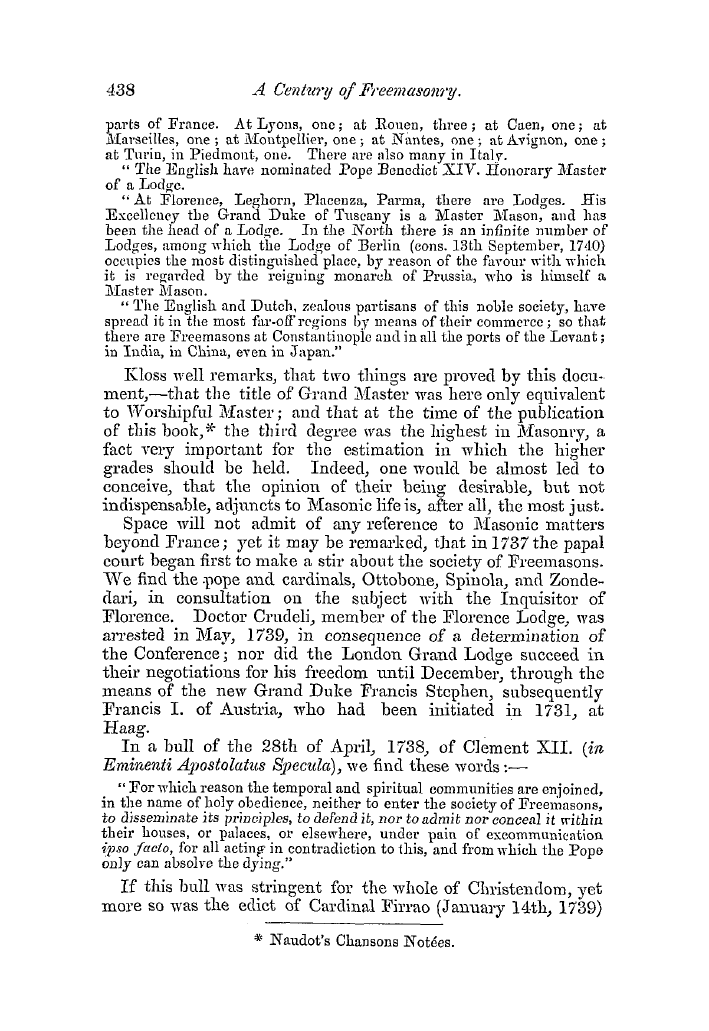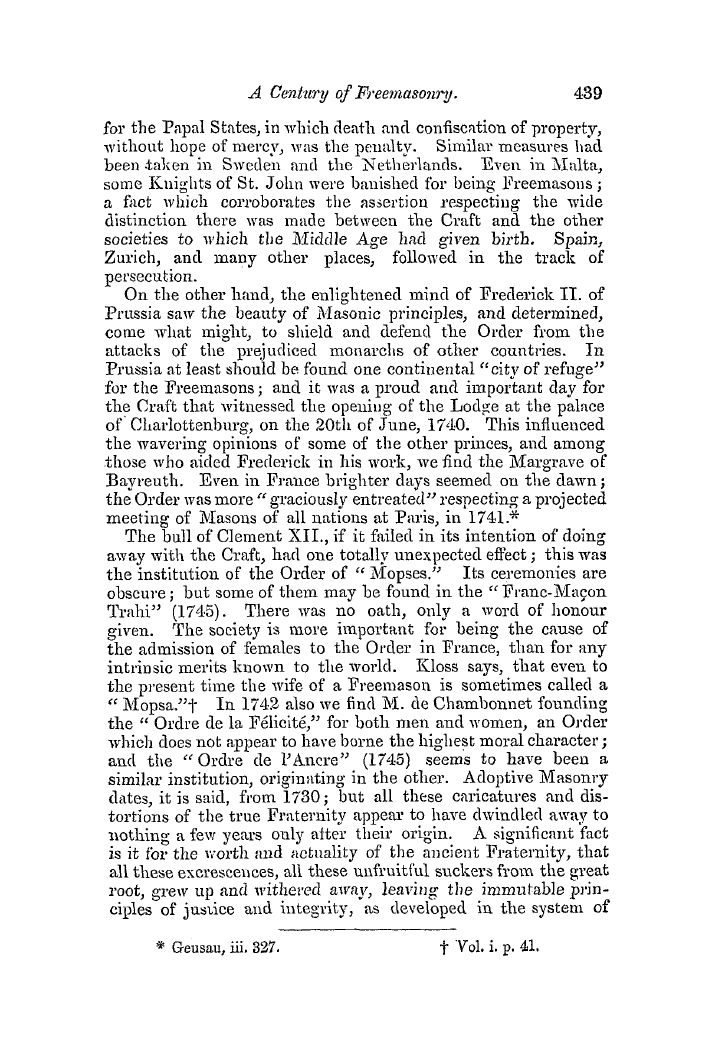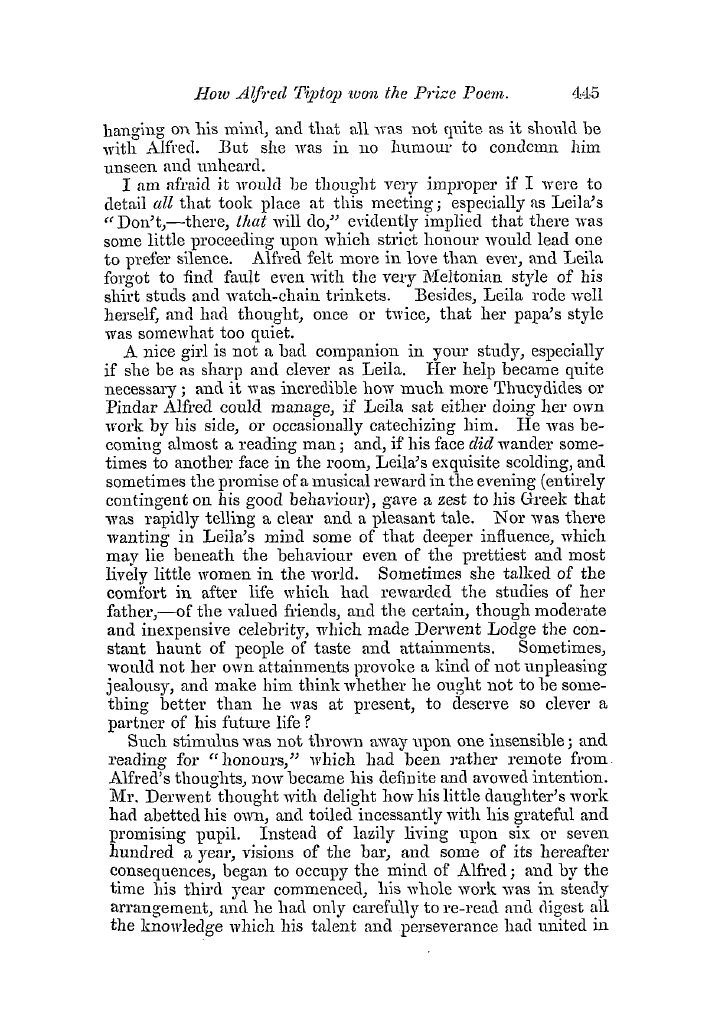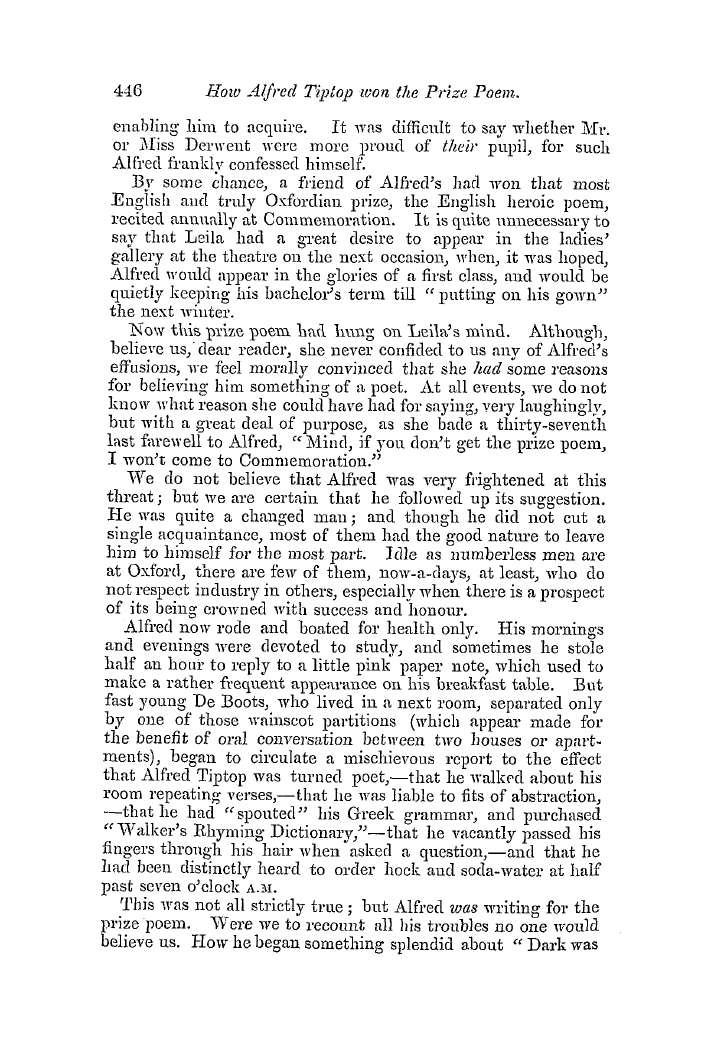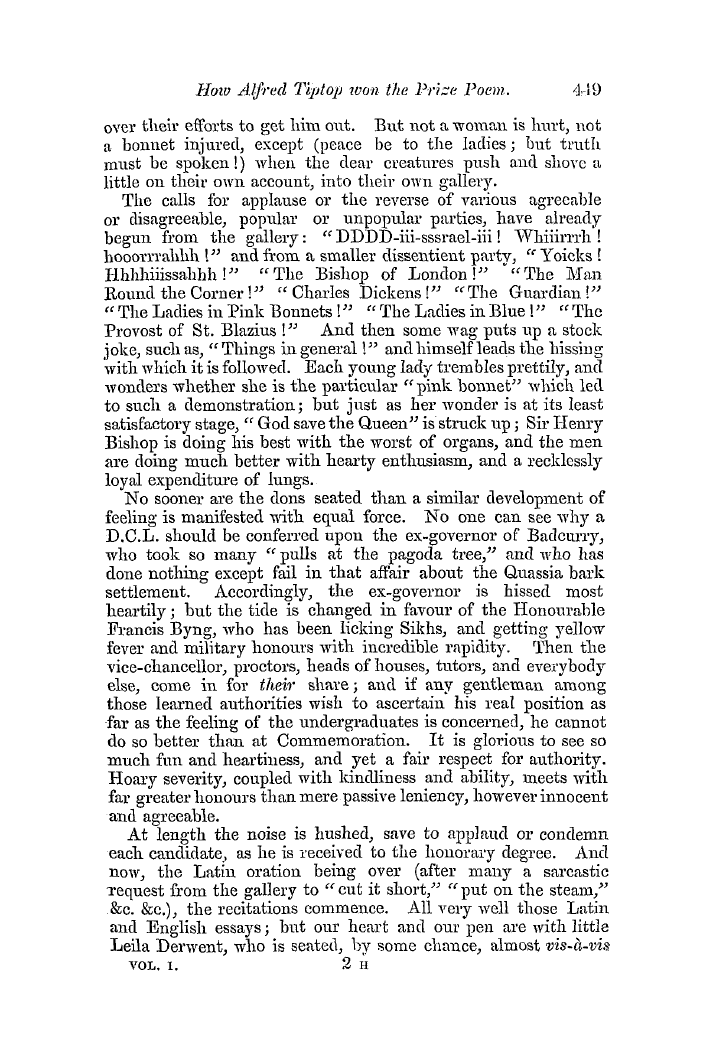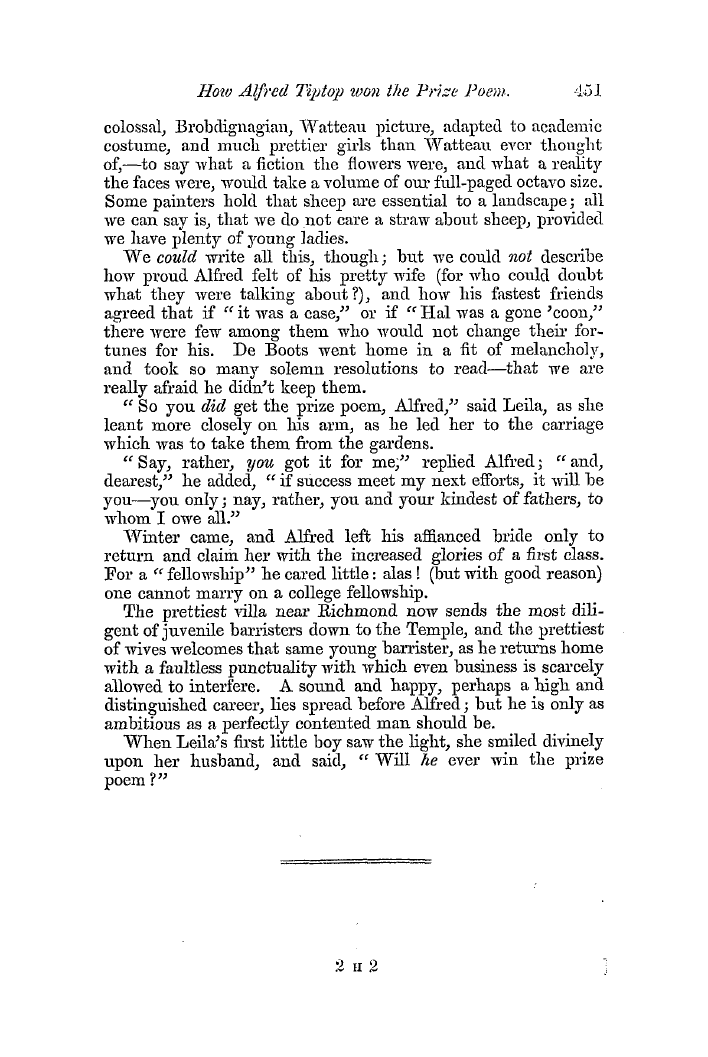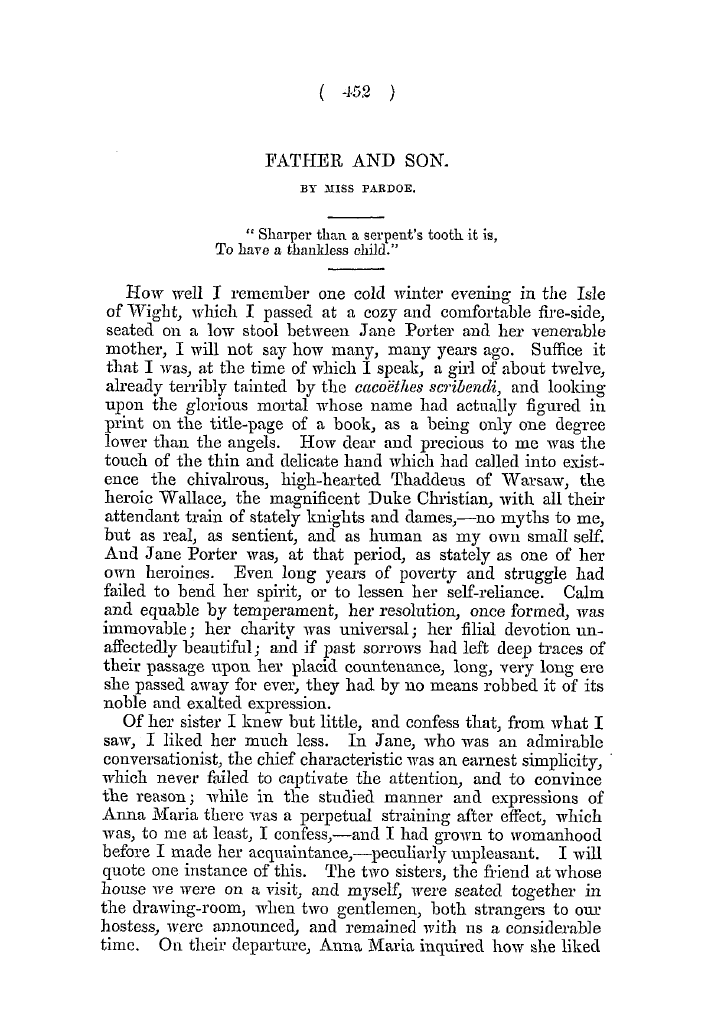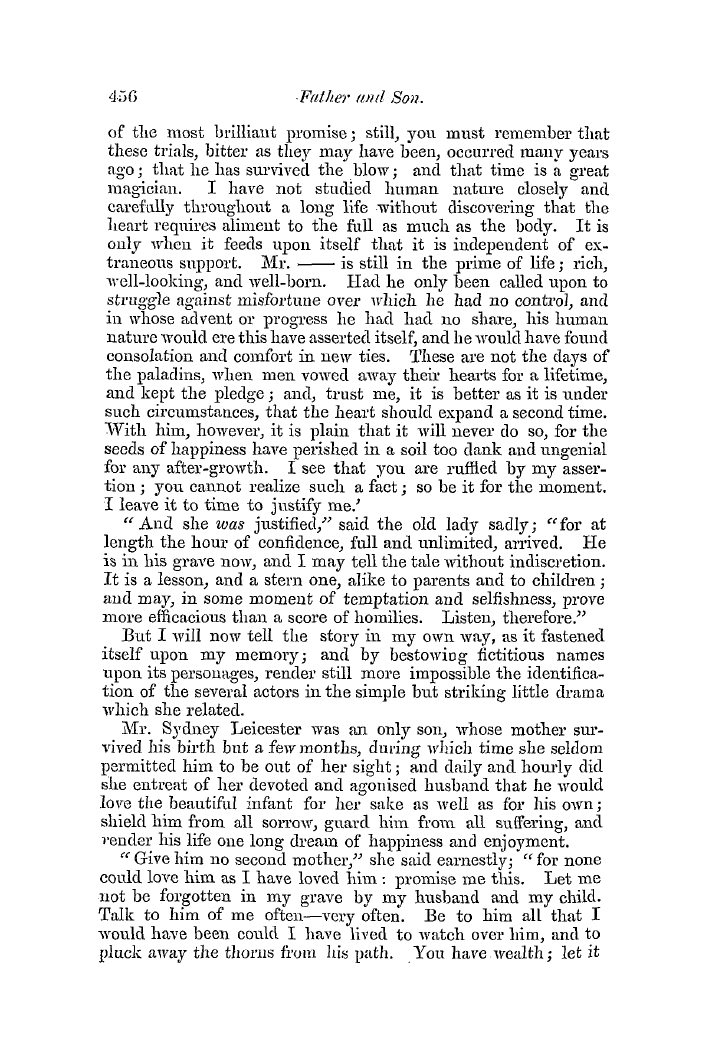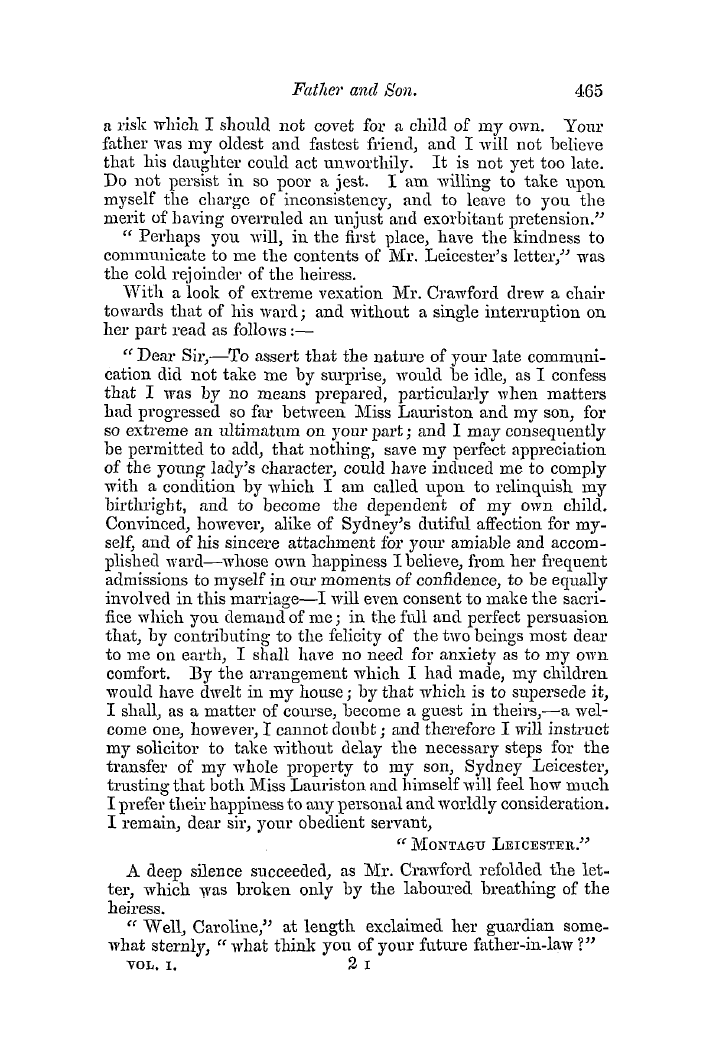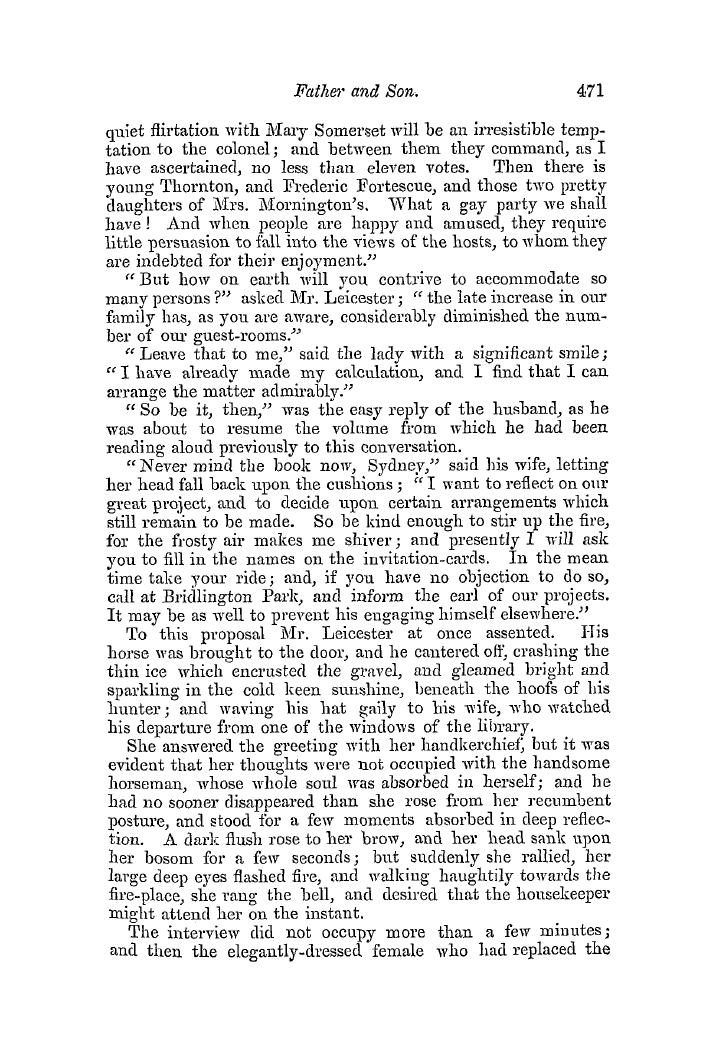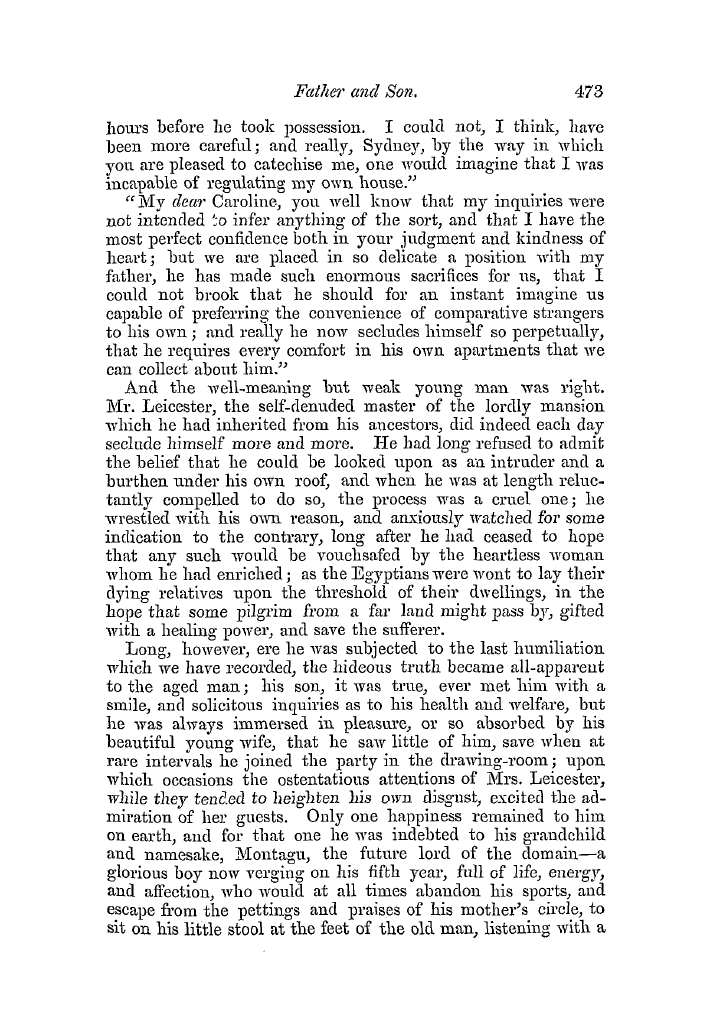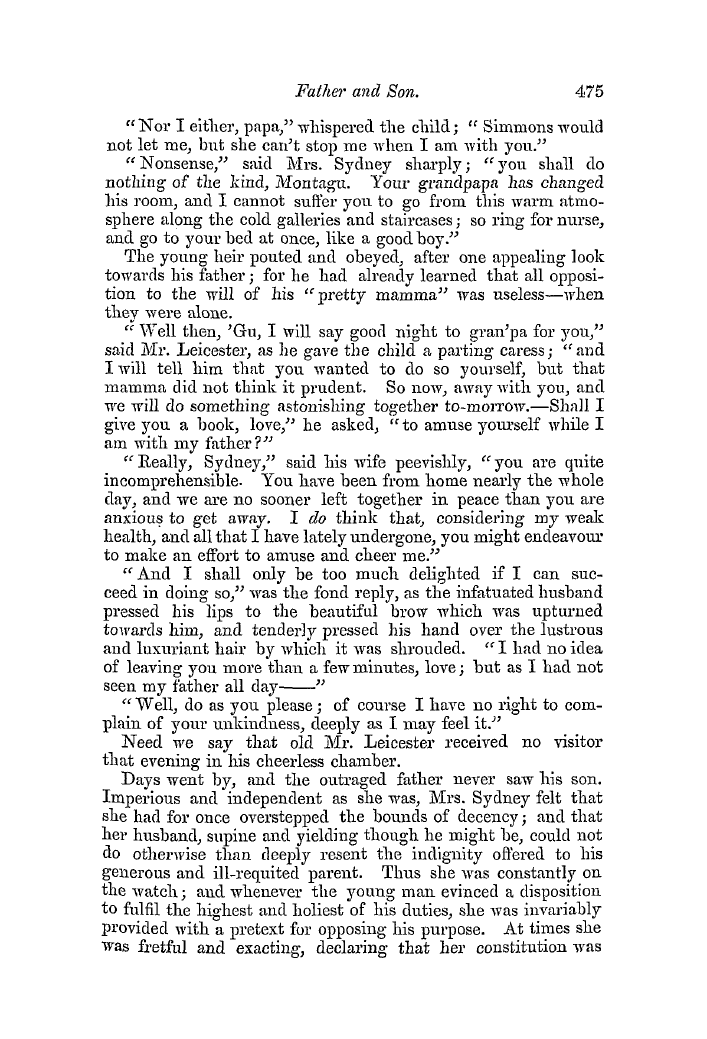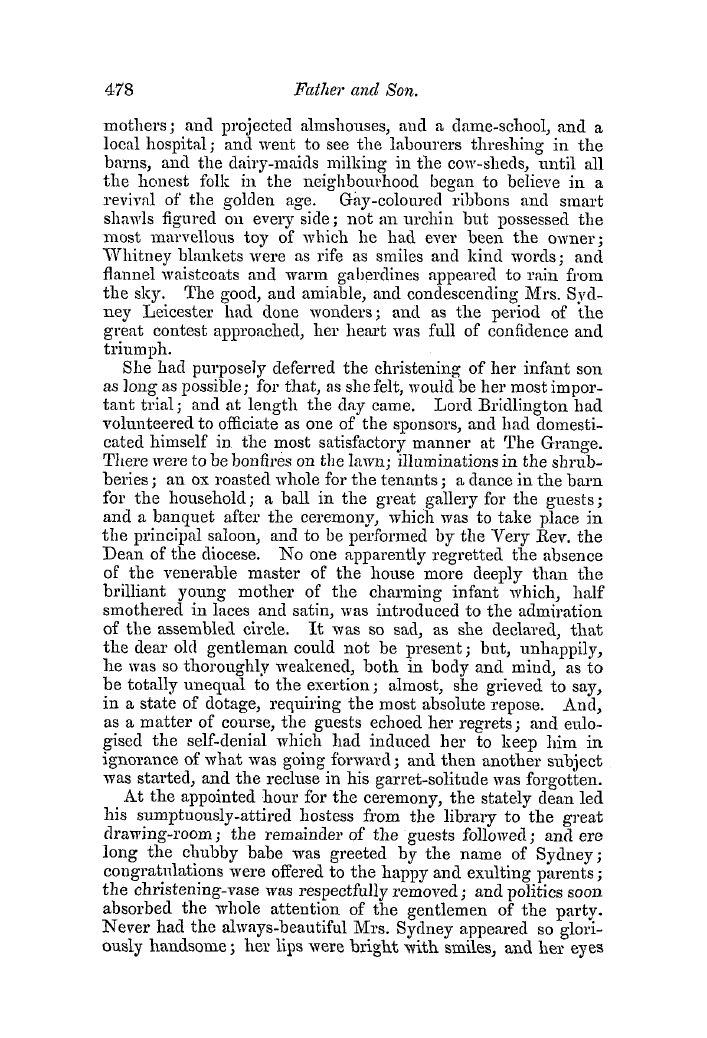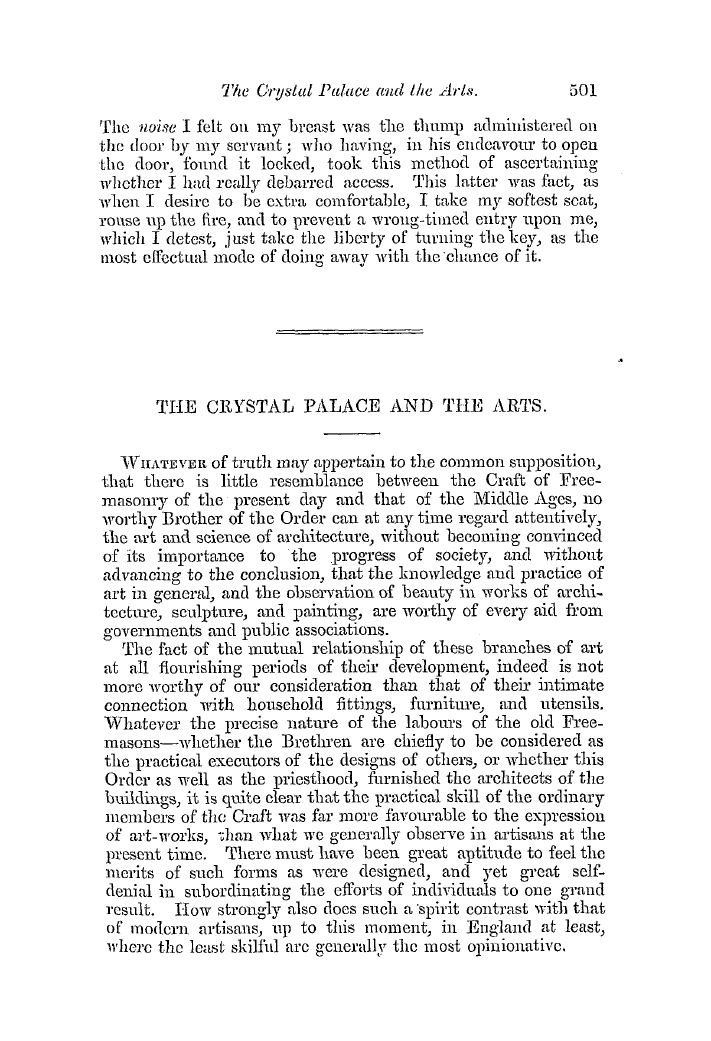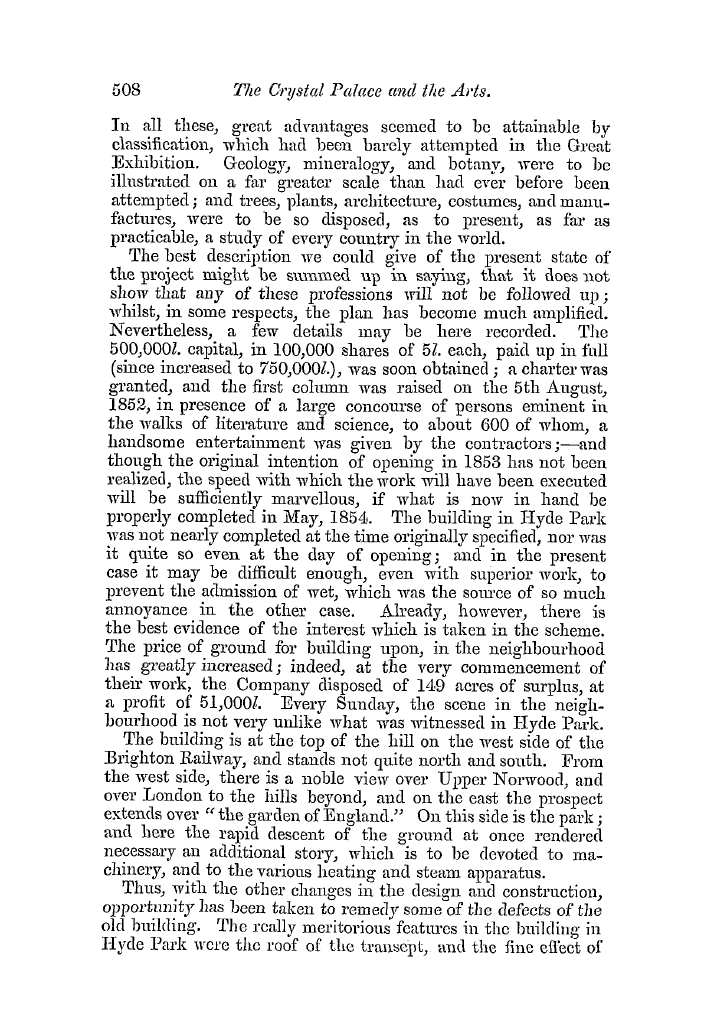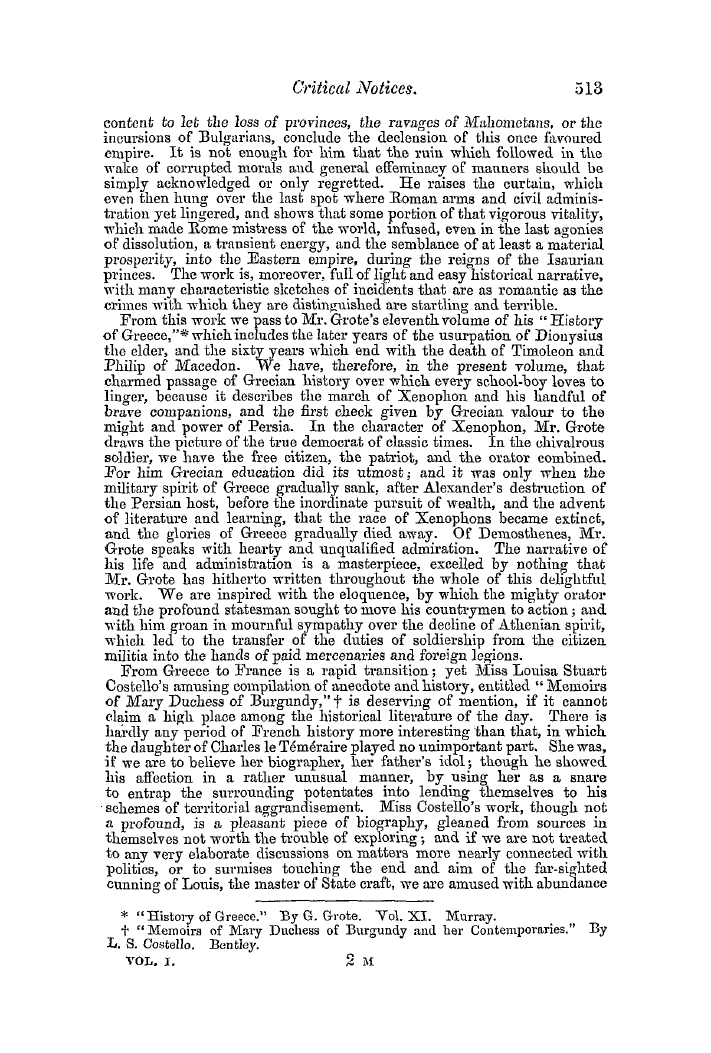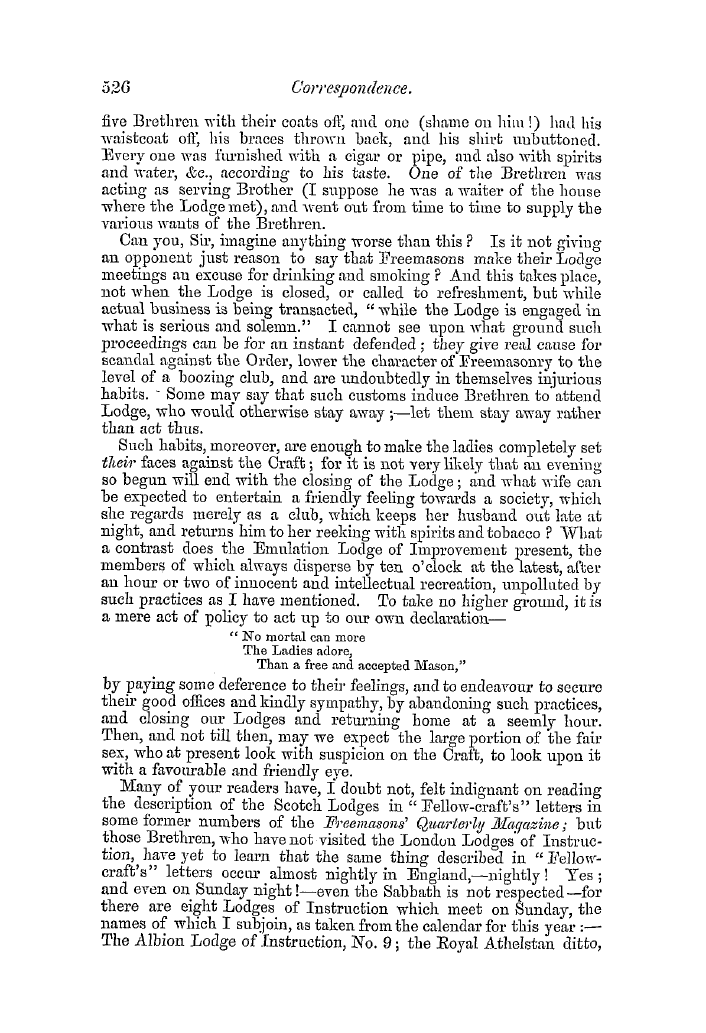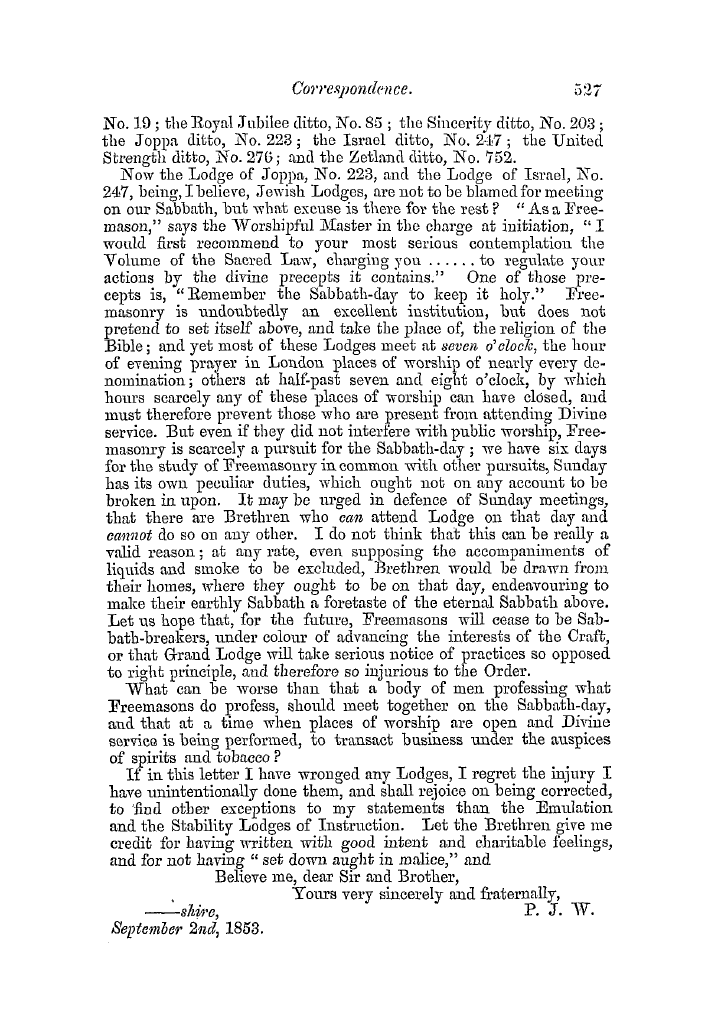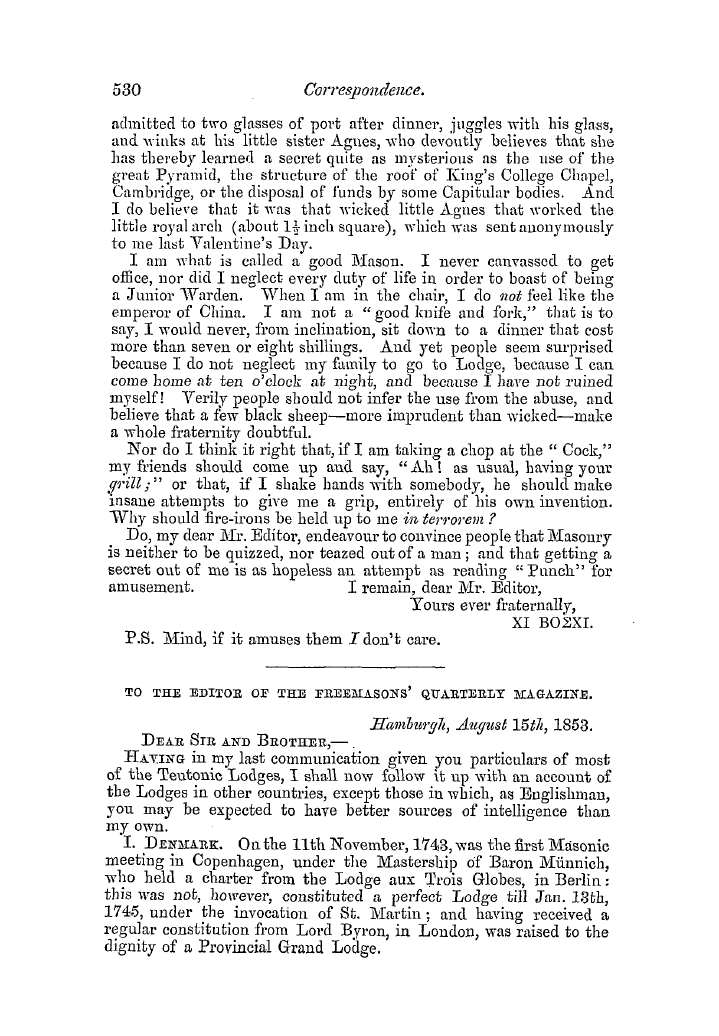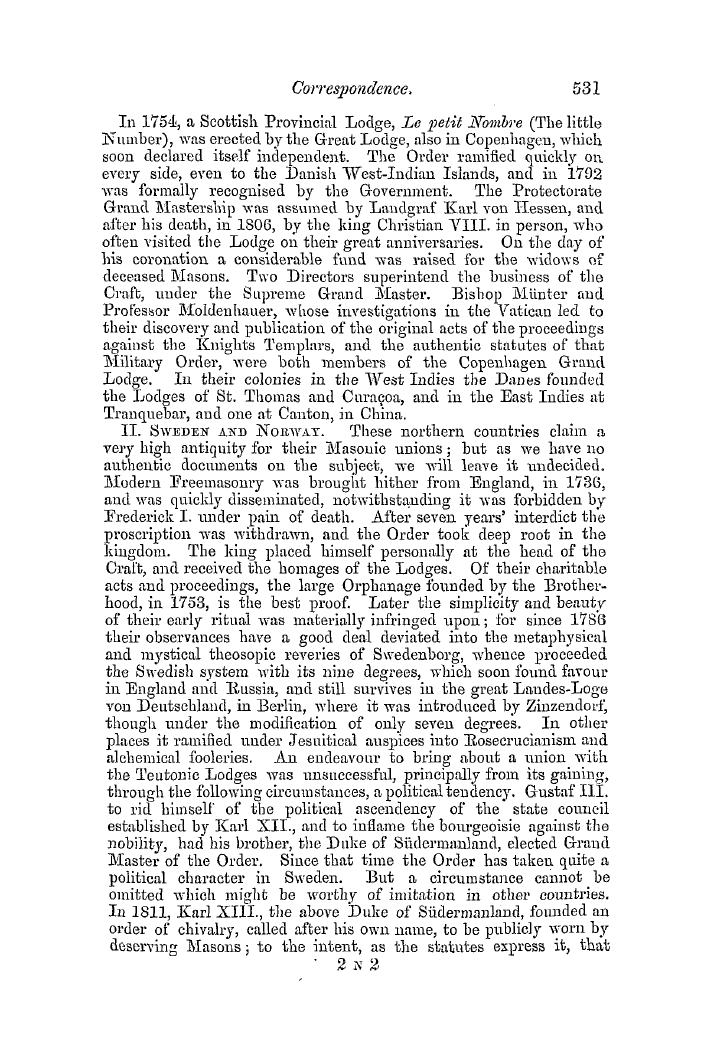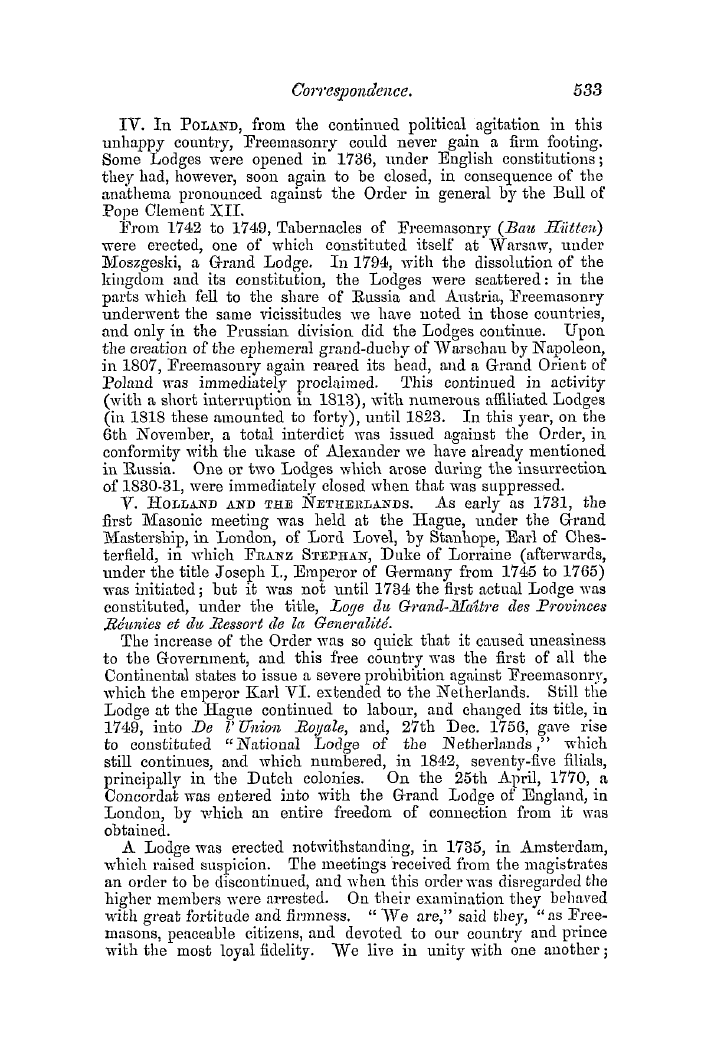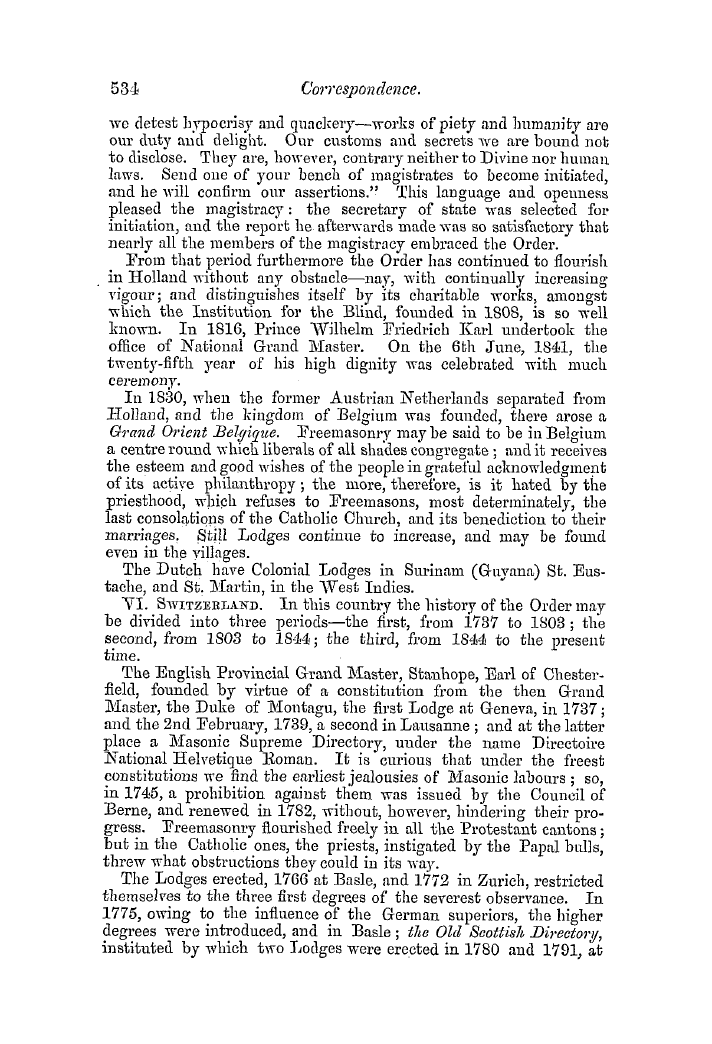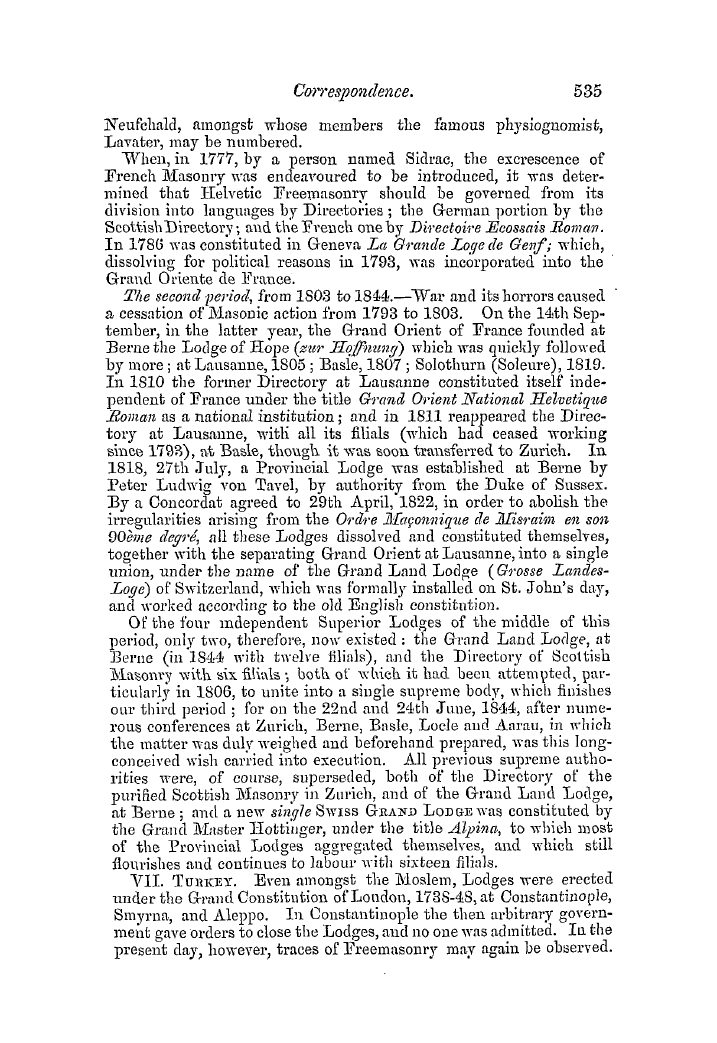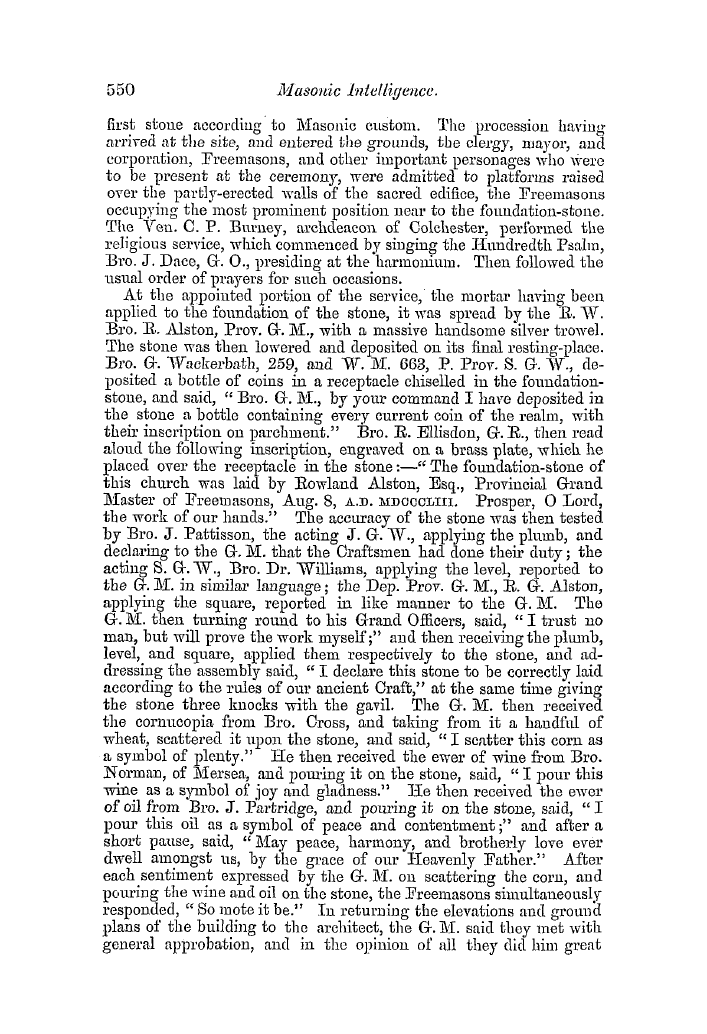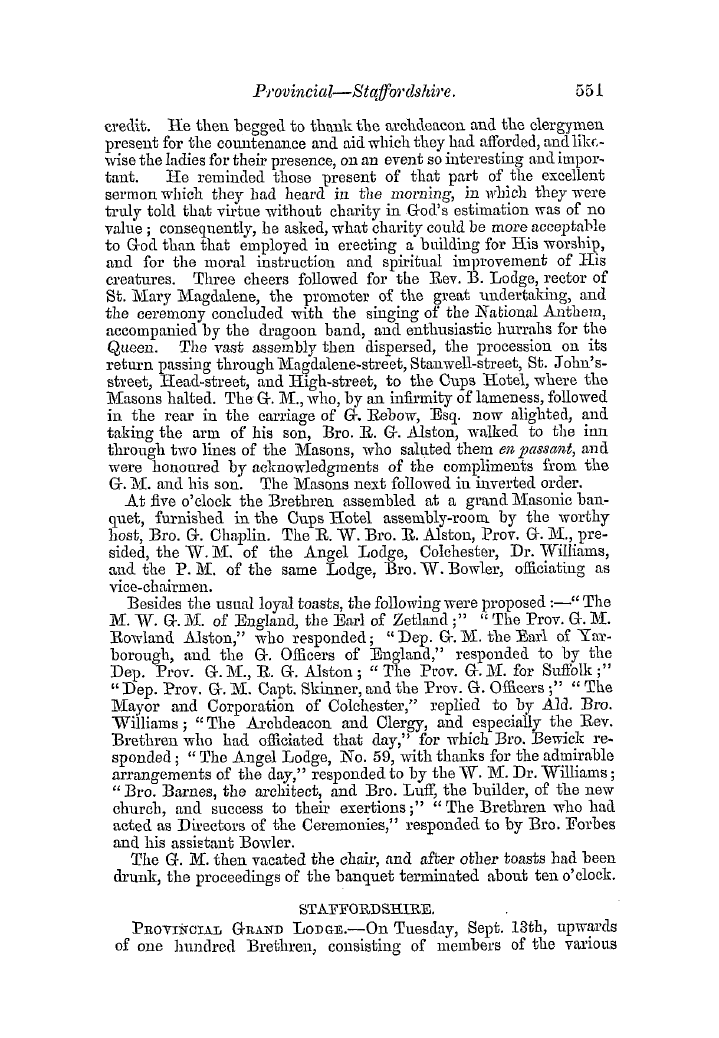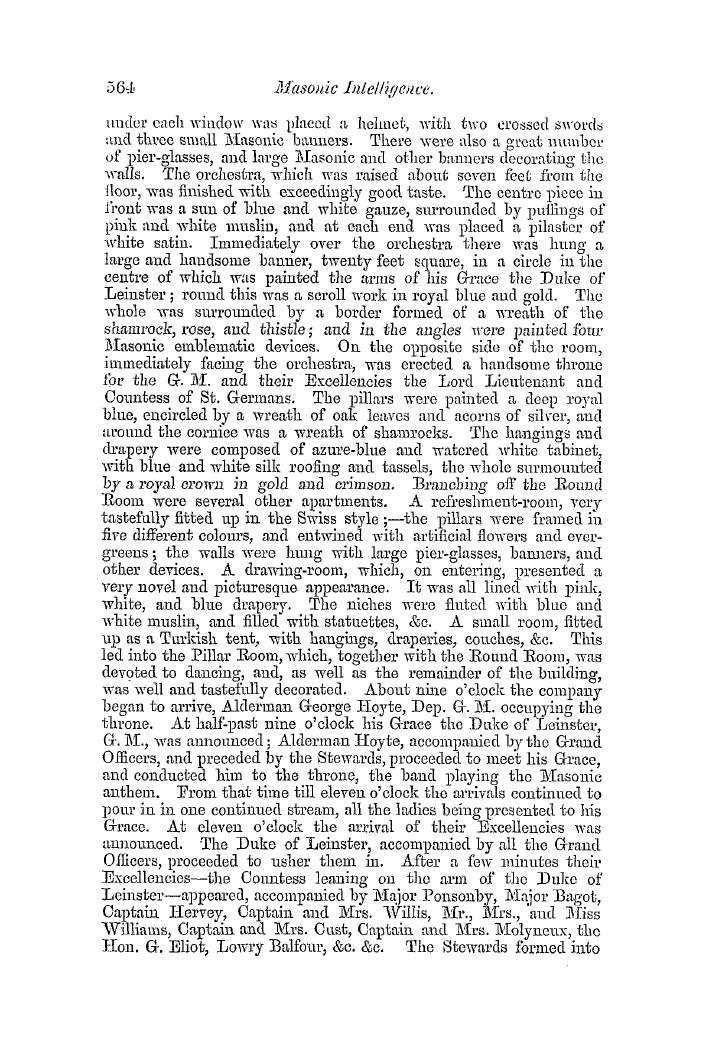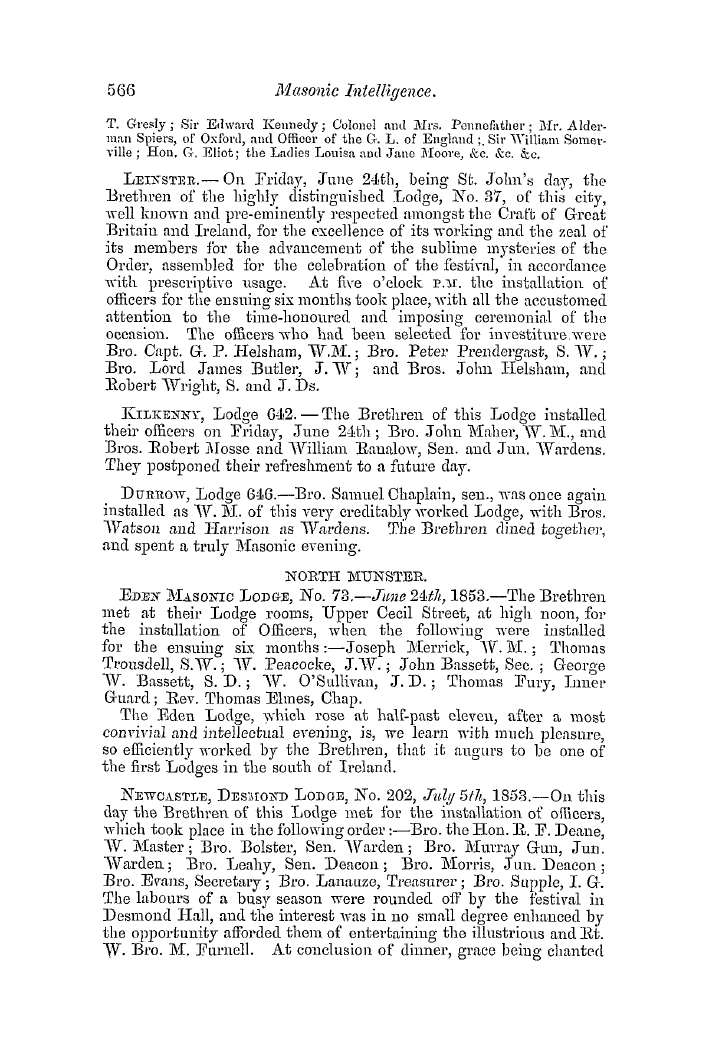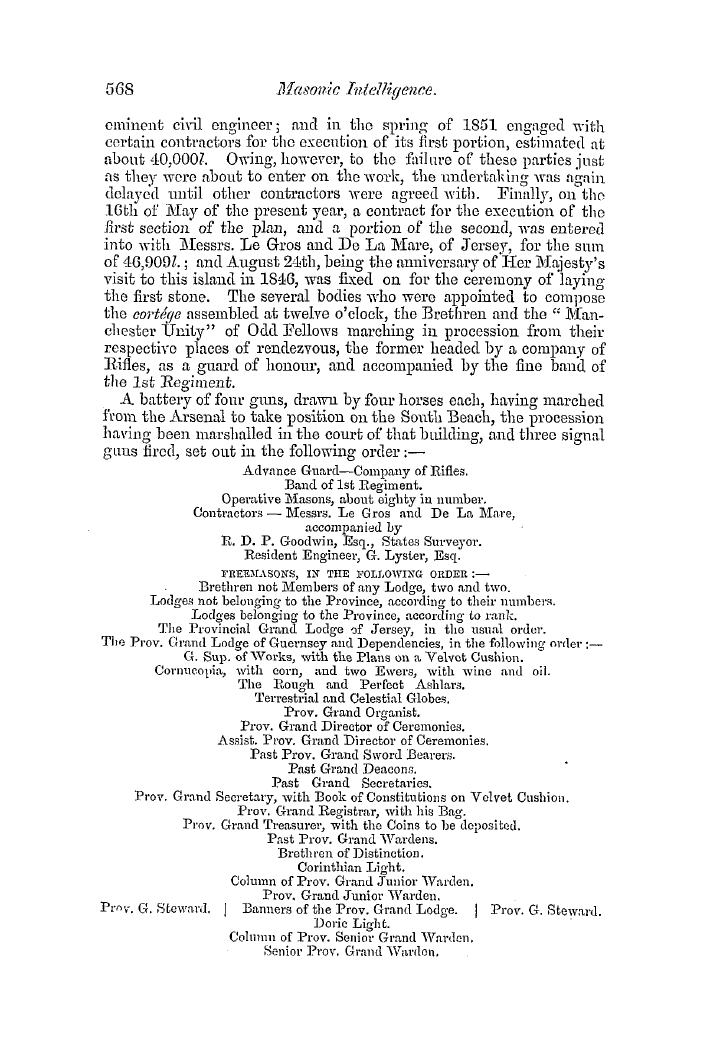-
Articles/Ads
Article OLDEN HOLIDAY CUSTOMS ← Page 4 of 11 →
Note: This text has been automatically extracted via Optical Character Recognition (OCR) software.
Olden Holiday Customs
feasting in the North generally goes by the name of the Mell or Meal supper . In Kent , the " ivy-girl , " a female figure made of a corn-sheaf , is mounted on the waggon , and brought home Avith the last load of corn , amid considerable acclamation . The notion of celebrating the prosperous conclusion of harvest is one of very wide extent . It will be sufficient to
give in illustration two instances ; one from the remote West , and the other from the extremity of the Eastern continent . Acosta , speaking of Peruvian superstitions , tells us that after the completion of harvest , a figure is formed of the best maize , termed Perva , and enfolded in a rich garment . This is highly venerated , termed the mother of the maize , and of their
inheritance , and is believed to have the gift of preseiwing future crops . In China , harvest is attended by the emperor in person ; as Avell as at the early spring , when , accompanied by his mandarins , he offers sacrifices to Chang-ti , to obtain plenty , before tilling and soAving the ground ; the latter he commences Avith his own hand , by scattering abroad seeds of wheat , rice , maize , and millet .
Towards the end of September Ave have the custom of Hallow-een fires , kindled at that season . The folloiving is an extract from a letter , describing them as seen as Paisley , about twenty years ago : — " In a shalloAV part of the stream Whitecart , parties of boys construct on HahW EA e ( the night when varied superstitions engross most of old Scotia ' s peasantry )
circular raised hearths of earth or clay , bordered by a low round wall composed of loose stones , sods , & c . Within these enclosures the boys kindle on their hearths bonfires , often of considerable size . The number and glare of the fires , their tremulous reflection in the sirrroimding water , the dark moving figures of the boys that group around themand the shouts and
, screams set up by the youthful urchins , might almost make one fancy that the rites and incantations of magic , or of wizardry , were taking place before one ' s very eyes . What is the origin of this custom I do not know . " Before taking leave of this month , we have only to refer to the goose at Michaelmas tables , relative to which there is
nothing of much interest to dilate upon . It was much in vogue in Queen Elizabeth's time . Leaving then Michaelmas , Avhen ( as Churchill says ) : — " By custom , right divine , Geese are ordained to bleed at Michael ' s shrine , " Ave pass on to the succeeding month , Avhich is rather barren of general holiday customs . The celebrated Pack-Mondav Fair
Note: This text has been automatically extracted via Optical Character Recognition (OCR) software.
Olden Holiday Customs
feasting in the North generally goes by the name of the Mell or Meal supper . In Kent , the " ivy-girl , " a female figure made of a corn-sheaf , is mounted on the waggon , and brought home Avith the last load of corn , amid considerable acclamation . The notion of celebrating the prosperous conclusion of harvest is one of very wide extent . It will be sufficient to
give in illustration two instances ; one from the remote West , and the other from the extremity of the Eastern continent . Acosta , speaking of Peruvian superstitions , tells us that after the completion of harvest , a figure is formed of the best maize , termed Perva , and enfolded in a rich garment . This is highly venerated , termed the mother of the maize , and of their
inheritance , and is believed to have the gift of preseiwing future crops . In China , harvest is attended by the emperor in person ; as Avell as at the early spring , when , accompanied by his mandarins , he offers sacrifices to Chang-ti , to obtain plenty , before tilling and soAving the ground ; the latter he commences Avith his own hand , by scattering abroad seeds of wheat , rice , maize , and millet .
Towards the end of September Ave have the custom of Hallow-een fires , kindled at that season . The folloiving is an extract from a letter , describing them as seen as Paisley , about twenty years ago : — " In a shalloAV part of the stream Whitecart , parties of boys construct on HahW EA e ( the night when varied superstitions engross most of old Scotia ' s peasantry )
circular raised hearths of earth or clay , bordered by a low round wall composed of loose stones , sods , & c . Within these enclosures the boys kindle on their hearths bonfires , often of considerable size . The number and glare of the fires , their tremulous reflection in the sirrroimding water , the dark moving figures of the boys that group around themand the shouts and
, screams set up by the youthful urchins , might almost make one fancy that the rites and incantations of magic , or of wizardry , were taking place before one ' s very eyes . What is the origin of this custom I do not know . " Before taking leave of this month , we have only to refer to the goose at Michaelmas tables , relative to which there is
nothing of much interest to dilate upon . It was much in vogue in Queen Elizabeth's time . Leaving then Michaelmas , Avhen ( as Churchill says ) : — " By custom , right divine , Geese are ordained to bleed at Michael ' s shrine , " Ave pass on to the succeeding month , Avhich is rather barren of general holiday customs . The celebrated Pack-Mondav Fair


